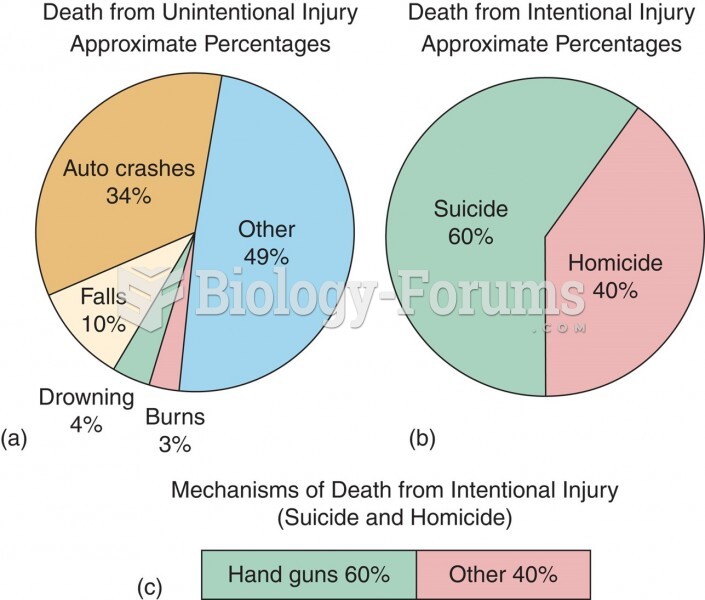|
|
|
The Centers for Disease Control and Prevention has released reports detailing the deaths of infants (younger than 1 year of age) who died after being given cold and cough medications. This underscores the importance of educating parents that children younger than 2 years of age should never be given over-the-counter cold and cough medications without consulting their physicians.
The average human gut is home to perhaps 500 to 1,000 different species of bacteria.
It is believed that humans initially contracted crabs from gorillas about 3 million years ago from either sleeping in gorilla nests or eating the apes.
Not getting enough sleep can greatly weaken the immune system. Lack of sleep makes you more likely to catch a cold, or more difficult to fight off an infection.
In Eastern Europe and Russia, interferon is administered intranasally in varied doses for the common cold and influenza. It is claimed that this treatment can lower the risk of infection by as much as 60–70%.
 With the vehicle raised one foot (30 cm) off the ground, push down on the vehicle to check if it ...
With the vehicle raised one foot (30 cm) off the ground, push down on the vehicle to check if it ...
 After lowering the vehicle, be sure all arms of the lift are moved out of the way before driving the ...
After lowering the vehicle, be sure all arms of the lift are moved out of the way before driving the ...





